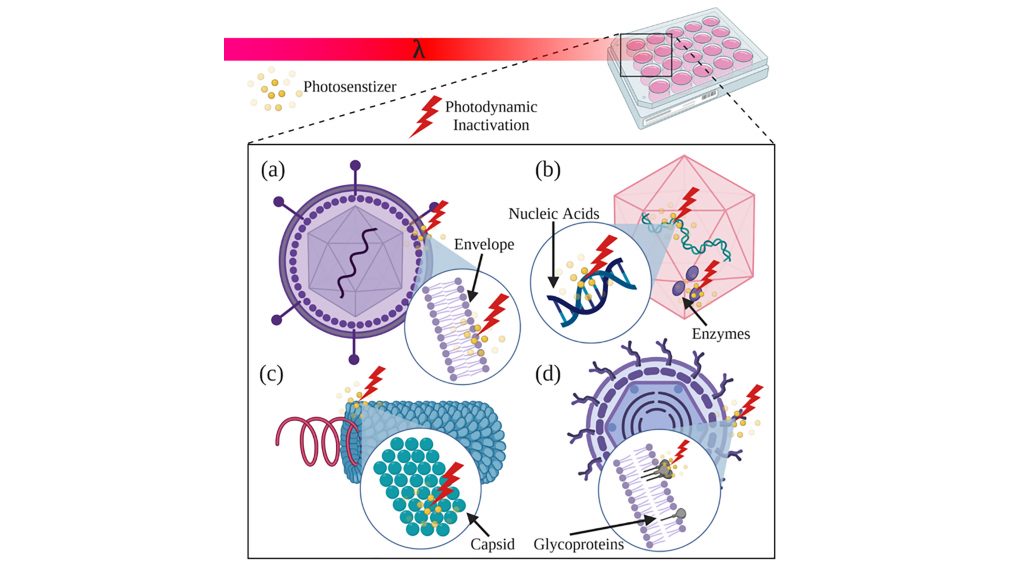From the Journal: Applied Physics Reviews
WASHINGTON, May 18, 2021 — The COVID-19 pandemic has reinforced the pressing need to mitigate a fast-developing virus as well as antibiotic-resistant bacteria that are growing at alarming rates worldwide.
Photodynamic therapy (PDT), or using light to inactivate viruses, bacteria, and other microbes, has garnered promising results in recent decades for treating respiratory tract infections, such as pneumonia, and some types of cancer.

In Applied Physics Reviews, by AIP Publishing, researchers at Texas A&M University and the University of São Paulo in Brazil review the existing approaches and propose adding antibodies to enhance PDT efficacy. They provide a model to help expedite overall PDT development as a rapid response to emergent viral pandemic threats. The research is based on physical principles to target a wide range of diseases.
“The COVID-19 pandemic calls for extraordinary measures to address current gaps in the therapeutic treatment of infectious diseases, in general, and viral agents, in particular,” author Vladislav Yakovlev said. “We show how photodynamic therapy can be capable of providing an inexpensive alternative strategy in the fight against viral and bacterial infections.”
In PDT, photosensitizers (dyes and other light-reacting compounds) are typically administered intravenously or applied on the skin where treatment is needed. Microbes or cancer cells absorb the photosensitizers. The compounds react to light from a laser to form reactive oxygen species, toxic oxygen molecules that kill the cancer cells or pathogen.
One of the most promising PDT methods highlighted by the researchers is antibody PDT, or aPDT. The method involves attaching photosensitizers to viral antibodies to increase the immune response. The antibody is modified by attaching a small light-absorbing molecule, which upon illumination, can transfer the photon energy to the targeted virus particles, resulting in their destruction while reducing harm to host cells and healthy tissue.
“The aPDT process is characterized by high selectivity, rapid microbial killing, minimal invasiveness, and low occurrence of side effects,” Yakovlev said. “It also ideal for repetitive application without the concern of bacterial resistance.”
The researchers developed a mathematical model to compare PDT to other antiviral treatment by focusing on three parameters critical in modifying the treatment response to determine efficacy: photosensitizer, light, and oxygen.
Molecular oxygen is considered intrinsic to the biological system since it is present at the site of infection. On the other hand, the light dose and the photosensitizer concentration are flexible parameters to achieve efficient results in treatment.
Research protocols, therefore, should consider not only the photosensitizing molecule appropriate to the biological target and adequate wavelength but also the photosensitizer concentration, incubation time, and light dose.
###
For more information:
Larry Frum
media@aip.org
301-209-3090
Article Title
https://aip.scitation.org/doi/10.1063/5.0044713
Authors
Jace A. Willis, Vsevolod Cheburkanov, Giulia Kassab, Jennifer M. Soares, Kate C. Blanco, Vanderlei X. Bagnato, and Vladislav V. Yakovlev
Author Affiliations
Texas A&M University, University of São Paulo
